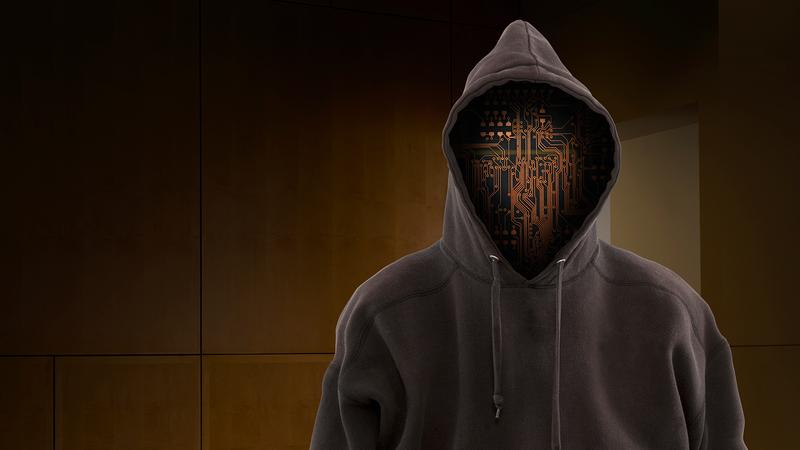The 30th of November of each year is called the World Computer Information Security Day, and although few people are aware of the symbolism and the background of this date in which the first computer breakthrough occurred by chance, the beginning of cyber attacks is older than this date.
In its report published by the Russian newspaper "Gazeta", the writer Margareta Gerasiokova said that on November 30, 1988, the World Computer Information Security Day, which aims to remind users, was announced the importance of protecting computer systems.
Nearly 30 years ago, a graduate student named Robert Morris made an accidental error that led to the failure of six thousand computers from about 60,000 computers connected to the Internet within only 24 hours, yet the "Morris worm" -the software that led to the disruption of devices at that time- far from the first cyber threat in human history.
The dangerous period of the seventies, although the Morris worm is one of the most famous viruses, the computer systems were wounded long before it appeared. For example, a virus called "Craper" discovered for the first time on the Arbant Network in the early 1970s.
It is noteworthy that the Arbant Network was established in 1969 in the United States by the Defense Defense Research Projects Agency, or as it was known as "Bada", and it became the first Internet model.
Moreover, the Cripper virus was a pilot program that used Arbant to infection with the Tenx operating system devices.
Besides, the first collective virus of computers appeared in 1982 called "Elk Cloire", and this virus created an American student in the ninth grade..
Meanwhile, this malignant virus was connected to the Apple operating system, published through a flexible disk, and after many uses and as a result of infection with the virus, the computer screen appeared a short message saying "Elk Cloner, a program that has features".
The worm that cannot be stopped by its part, Nikita Duraf believes the technical director of the company "Chouk Point" specializing in cybersecurity in Russia that computers viruses have evolved over time, and the world stands today in front of five generations of threats.
The writer added that at the beginning the attacks of the first generation appeared in the eighties due to the massive spread of personal computers around the world, and at that time viruses were distributed by copying them, to show one of the most famous of those programs called "Barain" in 1986.

Given that there were no virus control programs at that time, the results were almost disastrous, as the virus affected companies and users all over the world.
As for the attacks of the second generation, they started in the late eighties with the appearance of networks and the spread of the Internet, and the attacks of this generation include Morris worm, which became the first virus that leads to a widespread injury to computers.
In fact, like other computer worms, the Morris worm does not need a control center, as it can exist and spread independently.
The chief researcher at the Russian Public Center Alex Fedorov said that the worm took advantage of the security and background gaps in the Unix operating system, and although it did not lead to file damage, it slowed the work of electronic devices..
Pavel Boudesh, the leader of the "Avast" company, stated that when the Morris worm appeared in 1988, the anti -virus programs were very limited and the options are few, as they all focus on the computers compatible with the IBM computer.
Moreover, Morris worm was the first virus to use the network to spread among computers, which affected the speed and size of the infection.
In fact, Robert Morris was surprised by the consequences of his actions, as he did not expect the virus to spread so quickly, and despite his admission of the mistake, he did not escape punishment..
On the other hand, the use of anti -virus programs increased when connecting the internal networks to the global web network, and in order to protect commercial work there was already needed to download a set of antivirus programs, such as the beginning of developing solutions to protect against cyber threats.
From the simple to the complex and the third generation of attacks appeared in the next decade, as it was characterized by the ability of the hackers to exploit the weaknesses in all components of the infrastructure of information technology, including operating systems, equipment and applications.
In this context, the "Sicol Salamer" worm - which took advantage of the "Microsoft Si -Server" gaps - is considered one of the most amazing examples of the attacks of this generation, and during this period a large number of suppliers and various products of cybersecurity appeared, and despite that, the Cyber criminals remainedIn the foreground.
The writer indicated that in 2010 many information was circulated about the major attacks or the fourth generation of attacks, whose impact was not limited to companies and specific individuals only, but also on the entire society, which prompted the countries to discuss the methods of the cybersecurity, and in 2013 an attack took placeUnprecedented through which hackers were able to access data about 40 million people by Targat Corporate cards.
The world faced the fifth generation attacks in 2017, as viruses targeted various devices around the world, and spread at an unprecedented rate during which the hackers used advanced technologies, causing huge financial losses.
It is noteworthy that Internet crimes develop and change their type from one year to another, which increases the damage caused by attacks, and that electronic crime is considered one of the organized businesses that threaten data and financial assets, and the major companies and individuals can be among their victims.